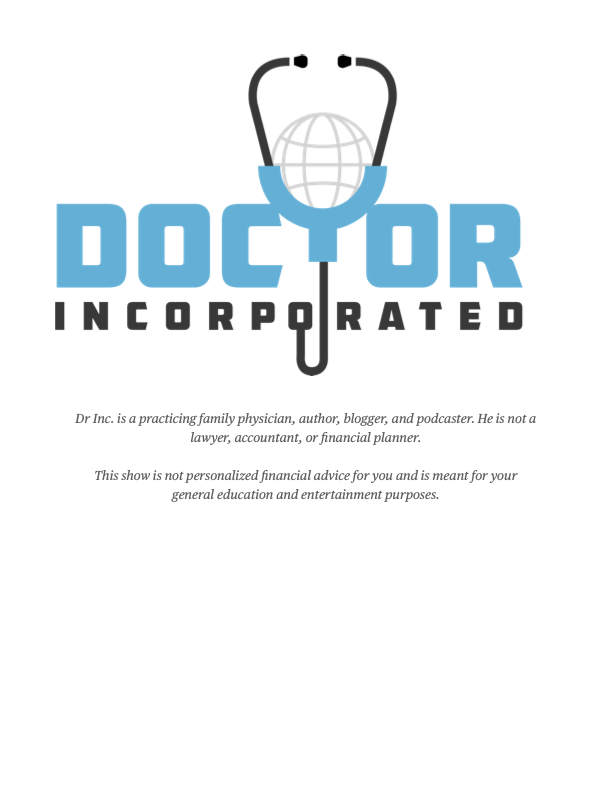
Hello, this is Dr. Incorporated, bringing you the Truth About Employed Physicians. I want to thank you today for the efforts you make to continually learn about what it means to be a physician in your area or field of interest. You likely have a medical journal or magazine or an article somewhere on your nightstand or your chair in your living room where you read an article that was pertinent to your area of medicine. And although you were tired and didn’t really feel like doing it, you pushed on and read the article. Then you assimilated the information into your practice while you made some mental notes about how things may be a little different for you the next day of clinical medicine.
Doctors Are Lifelong Learners
By reading those journal articles, you have engaged in that process of being a lifelong learner as a physician. It’s one of the things that sets physicians apart, you are driven to increase your understanding of medicine and genuinely like to learn. I want to thank you for making the effort to do this because I know it’s making you a better physician and when you’re a better physician, you can take care of your patients better. They’re the benefactors of your effort. I know you’re not doing it because your employer’s told you to do it, you’re doing it because deep down inside you have a drive to be good at what you do, which is really incredible.
Change is normal for doctors
As the group broke up and dispersed, Dr. M and myself were left with the task of managing the nearly 10,000 patients in that group. We had to reorganize our practice and envision what we wanted the future to look like if we stayed with the practice. This created a major crisis of identity for each of us as we had to decide if each of us wanted to continue working with the same employer, in the same location, but do the heavy lifting associated with the personal and practice transformation needed for our desired future.
Dr. M looked at some practices outside of the Midwest. He’s a hunting and fisherman kind of guy and looked into Montana and areas out west where he could really enjoy the outdoors a little bit more. I questioned what kind of practice model I wanted to work in and what I wanted to do with the prime years of my professional career. I had deeply invested in family practice obstetrics, including completing a fellowship and I wanted to preserve this component no matter where I landed.
know your strengths
We had multiple meetings together as we processed through our preferences. We hired some practice consultants that met with us as we talked through their perspectives all options at our disposal. Those meetings helped us discover that we both had no non-compete contracts in our back pocket with our current employer, which was a very important negotiation chip. At the end of the day, that meant Dr. M and I controlled our market share patients, which was a pretty big deal to our employer. This strength provided us with a lot of options, including potentially aligning with a competing hospital system that was eager to come to our own community. Competition is beneficial for the negotiation table. Our interest was to stay with our current organization as we very much enjoyed them, but for a number of business and economic reasons, we decided it was wise to look at all options on the table and to negotiate so that we could practice medicine the way we wanted to. In that process (I’m not going to bore you with some of the details of it) we ultimately chose to do different models of practice that fit each of our comfort zones.
Separate But Equal
We were both in the same building at the time, and in order to accomplish our separate but inter-related professional goals, we chose to split locations. I chose to go the route of buying a building and re-modeling it into a medical office building for my practice site that my employer agreed to lease from me as part of the re-organization process. Dr. M stayed in the practice site that was already pre-built. This basically allowed us to begin to recreate in our own sites with individualized models that we thought would work best for both of us. We both negotiated fair-market-value contracts, that we felt were ideal for the practice models that we would engineer. Our contract terms were blinded to each other as we wanted to allow some separation, yet maintain some degree of unity. He chose the route of the traditional employment contract which had a few different incentives built into it. While I chose the route of forming a professional corporation and an associated professional services agreement which is basically an employment light contract. In order to stay aligned and separated, I titled my new practice site the same name as Dr. M’s (our old group) but added a “Downtown” to it. This location and contractual change led to me regaining control of my medical practice as my own company contracted with my employer and this little change allowed me to have a lot more control over my personal professional life.
Burnout Averted
From the community standpoint, it looked like I was still an employee of the same health system and not much had changed other than my location. Of course, this was framed to the public as a move to provide more access to care. But, as I’ll expound in other posts, this change for me was a huge professional satisfier for me as it brought autonomy and control back into my life and salvaged me from the threat of burnout. Both Dr. M and I also made some demands in regards to our clinical support. We both had very large patient loads after several doctors had departed and I had 4000 to 5000 patients that I was going to be responsible for. In order for us to thrive in a sustainable fashion, we were going to need adequate staff support to meet those patient needs. That included adding nurse practitioners to support the practices, and it also included a new patient care model that would allow for what is called Team Care (or scribe care) medicine. Each us is supported by 3 nurses (rather than the traditional model of just one nurse for one doctor) who prep the visit, scribe, execute orders, e-scribe medications, and prep the patient for follow-up. This radically increased our efficiency, satisfaction, and ultimately made us more productive. Deploying Team Care was a real game-changer for us.
Dr. M was very interested in wound care and became very involved in our local wound care clinic, ultimately becoming a very successful director of wound care. I agreed to pilot a model of a patient center medical home for our organization, as I began to explore what we thought was going to be an effective model of care. Ultimately our organization decided to move away from this after two or three years due to poor reimbursement, but it was a great experience for me. I also took on a medical directorship over our community sports medicine program which I previously had just done as volunteer work. This allowed me to diversify my experiences, but also to add to my income.
Those were some of the decision trees that we walked through as Dr. M and I decided whether or not to stay with the organization. In choosing to stay, but separate, we saw each other flourish. Dr. M is still in practice still at the other site and is a highly successful wound care doctor. He speaks all over the country about wound care as he has developed into a national expert when it comes to wound care, especially bariatrics.
Happy and Thriving
I’m extremely happy with the fact that I’m now in a position where I own my medical office building that is leased to my employer as we now have three physicians and two nurse practitioners working alongside me. It’s a thriving, growing practice that’s very successful. We have 8000 to 10,000 patients in the practice that we’re responsible for, which translates to market share for our healthcare corporation. Now I have organized myself professionally in a way that allows me to maximize my productivity while forging a contract that is rewarded at fair market value for that productivity. Having my own PC has allowed me to diversify what I do clinically within medicine and also outside of patient care. For example, starting this blog and vlog has really grown out of my own business venture and my business interest when it comes to employed physicians.
From my experience in this journey, I believe there’s so much out there for employed physicians to enjoy if they can visualize all that how they could benefit from an employment-light structure as well. I believe it restores your autonomy which serves as a powerful antidote to burnout. It opens the door for so many possibilities for side gigs and passive income while maintaining all the benefits of being employed, and ultimately reducing some of the downsides of being employed.
Change is Normal
That tale of 8 physicians demonstrates that change is normal for us as physicians. Don’t be afraid to make a change for your personal or professional benefit.
I encourage you as an employed physician, to listen to some of these stories that I’ve told you about these eight physicians that have all successfully transitioned in different ways to different locations but are each so much happier now because of those transitions. I don’t want you as an employed physician to feel like you’re stuck working for “the man.” Or perhaps you’re stuck having third parties control, manage, and manipulate you. There are opportunities out there for you. You don’t have to stay stuck and feel the burdens that ultimately lead to burnout.
I invite you to add your comments, your thoughts, and your own experiences with transitions to our social media channels. Life as an employed doctor is ever-changing and ever-evolving. That’s a normal part of the process.
So the truth today is changing practice environments is normal for physicians. I encourage you to embrace that and thrive in it.
 Get A Copy Now!
Get A Copy Now!
https://www.doctorincorporatedthebook.com/







0 Comments